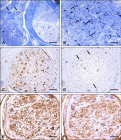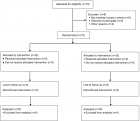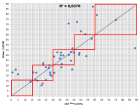Early Online (Volume - 9 | Issue - 1)
In vitro, Anti-oxidant, and Anti-inflammatory Activity of Kalanchoe pinnata
Published on: 24th January, 2025
Kalanchoe pinnata is a widely recognized medicinal plant known for its antioxidant and anti-inflammatory properties. This study explores its in vitro antioxidant and anti-inflammatory activities, highlighting its potential for pharmaceutical and biomedical applications. The research innovatively assesses its bioactive components using DPPH radical scavenging, nitric oxide inhibition assays, and phenolic content analysis. Results demonstrated significant antioxidant activity with IC50 values comparable to ascorbic acid, along with notable anti-inflammatory effects via nitric oxide inhibition. These findings emphasize Kalanchoe pinnata’s potential as a source for developing antioxidant and anti-inflammatory therapeutics. Further investigation into bioactive compound isolation and mechanistic pathways is recommended to clarify its pharmacological efficacy.
Green Synthesis of Citrus sinensis Peel (Orange Peel) Extract Silver Nanoparticle and its Various Pharmacological Activities
Published on: 28th March, 2025
Citrus sinensis is a rich source of bioactive compounds and has attracted attention due to its medicinal benefits. Historically regarded as agricultural waste, orange peel is rich in flavonoids, polyphenols, tannins, and essential oils with antibacterial, anti-inflammatory, and antioxidant qualities. The phytochemicals in Citrus sinensis peel were used as natural reducing and stabilizing agents in the green synthesis method used in this work to create silver nanoparticles (AgNPs). This method is an environmentally friendly alternative to conventional nanoparticle production, eliminating the need for hazardous chemicals. Based on the study’s results, green-synthesized silver nanoparticles derived from Citrus sinensis peel extract offer a sustainable and biocompatible substitute for biomedical applications. The pharmaceutical and healthcare industries may find therapeutic uses for them due to their exceptional antibacterial, antioxidant, and anticancer properties.
Artificial Intelligence in the Pharmaceutical Galenic Field: A Useful Tool with Associated Risks
Published on: 24th April, 2025
The integration of artificial intelligence (AI) technology into various fields, particularly healthcare, has demonstrated considerable potential in improving efficiency and accuracy. However, the potential risks associated with unprofessional or inappropriate use of AI cannot be overlooked. The current landscape of healthcare demonstrates a growing reliance on AI tools, which is expected to expand in the future. The existing literature highlights the effectiveness of various AI applications, including chatbots, in specific medical domains. This study aims to review relevant literature in the pharmaceutical and galenic fields while evaluating a prominent AI chatbot provider. Based on the findings, this article presents critical considerations for researchers and practitioners. A thorough assessment of the benefits and risks associated with AI technologies is essential as these tools become increasingly prevalent in pharmaceutical practices.
A Concise Review - An Analytical Method Development and Validation of Vildagliptin
Published on: 14th July, 2025
Vildagliptin is an orally active, potent, and selective Dipeptidyl Peptidase-4 (DPP-4) inhibitor, shown to be effective and well tolerated in patients with Type 2 Diabetes Mellitus (T2DM) as either monotherapy or in combination with other anti-diabetic agents. Vildagliptin is used to treat type 2 diabetes mellitus, typically in conjunction with diet and exercise. Vildagliptin is usually administered orally, with a common dosing regimen of 50 mg twice daily. It can be taken with or without food; however, it is important to take it consistently at the same time each day for optimal effectiveness.This study focuses on the most recent advancements in analytical methods for determining the presence of Vildagliptin in different biological media, such as human plasma and urine, as well as in bulk and commercial dose forms. The following analytical techniques will be fully investigated in this paper: High-pressure Liquid Chromatography (HPLC), High Efficiency Thin Layer Chromatography (HPTLC), liquid chromatography coupled to a tandem mass spectrometry system (LC-MS), and electrophoresis. These techniques include several parameters, such as the following: matrix, dynamic phase composition, permanent phase RF value for sensing frequency, retention duration, DL, carrier gas, flow rate, capillary wavelength, separation voltage, temperature, and pressure.
Comparative Activities of Stem Bark Extracts of Anthocleista vogelii, Bligha sapida, Voacanga africana and Momordica charantia Leaf against Plasmodium berghei- berghei in Mice
Published on: 5th August, 2025
Background: The search for antimalarial molecules from plants necessitates comparative studies of ethnomedicinal antimalarial plants to quickly identify those that may be used in further search. Therefore, the median lethal dose, LD50, and the antiplasmodial activities of the methanol extracts of the stem barks of Anthocleista vogelii, Bligha sapida, Voacanga africana, and the leaf of Momordica charantia were evaluated against Plasmodium berghei berghei-infected mice using prophylactic, chemosuppressive, and curative models to compare their activities and identify the most active for further evaluation. Methods: The plant materials were collected, authenticated, and voucher specimens were deposited at the Faculty of Pharmacy Herbarium, OAU, Ile-Ife. They were separately macerated in methanol, and the median lethal dose, LD50 determined using Lorke’s method. The percentage parasitaemia, percentage reduction, chemosuppression and clearance, survival time, and percentage survivor of each, in the three models of antiplasmodial test against Plasmodium berghei berghei infected mice were assessed. Pyrimethamine and Chloroquine were positive controls, while normal saline was a negative control. One-way analysis of variance (ANOVA) followed by Student Newman-Keuls post hoc test (p < 0.05) was used for the analysis of data. Results and Conclusion: The lowest prophylactic ED50 and ED90 values 304 and 624 mg/kg of AV, comparable chemosuppressive ED50 values of all extracts and the significantly (p < 0.05) lower values of ED50 and ED90 of MC and VA in the curative assay can guide the selection of the plant extract(s) for further antimalarial evaluation.
Pharmacovigilance is Important for Assessments of Drugs, and Withdrawal of the Drugs that have Adverse Effects More than The Benefits of Their Treatment
Published on: 26th August, 2025
Pharmacovigilance is concerned with the adverse effects of the authorized drugs after use, hence if the adverse effects are harmful and deteriorate other organs or tissues of the patient. These adverse effects were reported by the patients, pharmacists, nurses, clinicians, and physicians. Some examples which withdrawal from the markets according to the pharmacovigilance: astemizole, cisapride, terfenadine, and rofecoxib, which revealed many adverse effects leading to their withdrawal these drugs from the markets.Aim of the research: The knowledge around pharmacovigilance and improving the side effects of drugs which present in the market, the results of this improvement led us to obtain new drugs without serious side effects. We conclude that the market drugs improved from the older drugs, have side effects will are suitable to the usage by patients.

HSPI: We're glad you're here. Please click "create a new Query" if you are a new visitor to our website and need further information from us.
If you are already a member of our network and need to keep track of any developments regarding a question you have already submitted, click "take me to my Query."




















































































































































